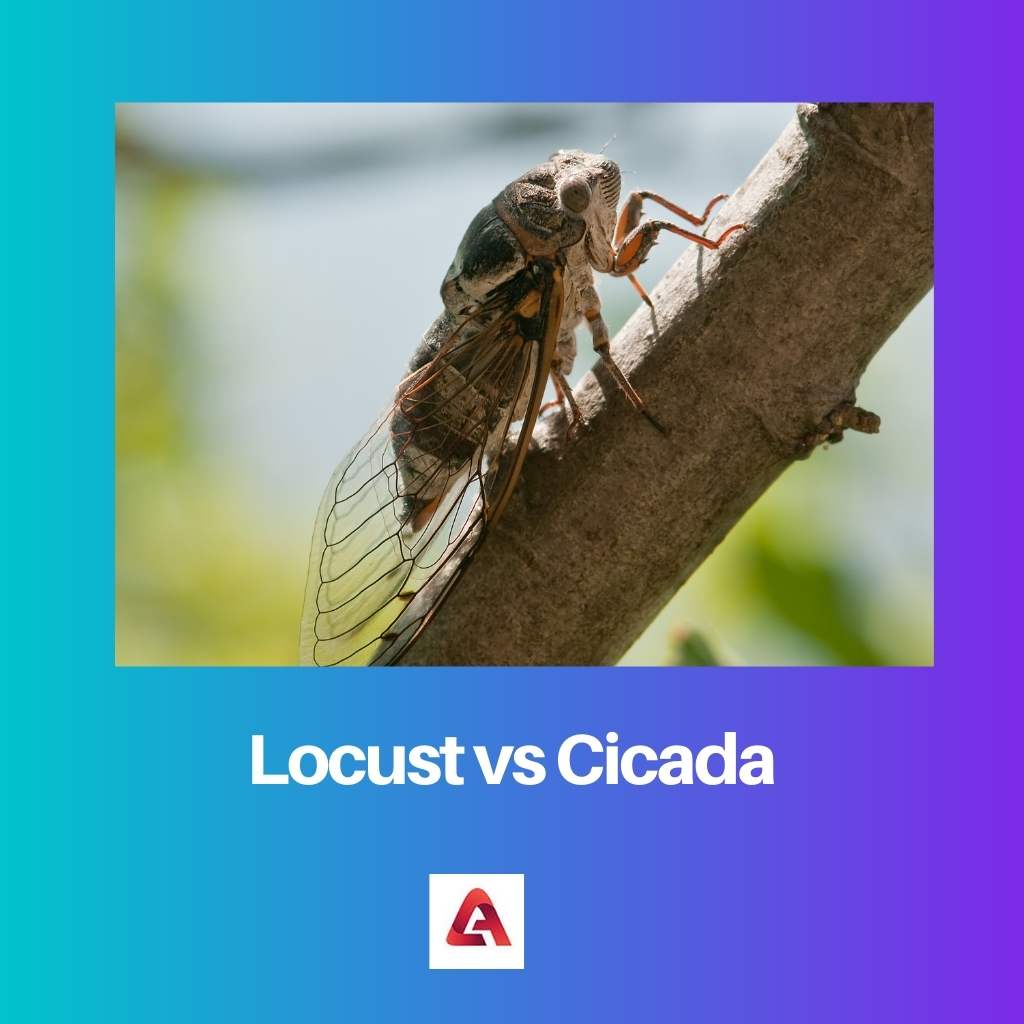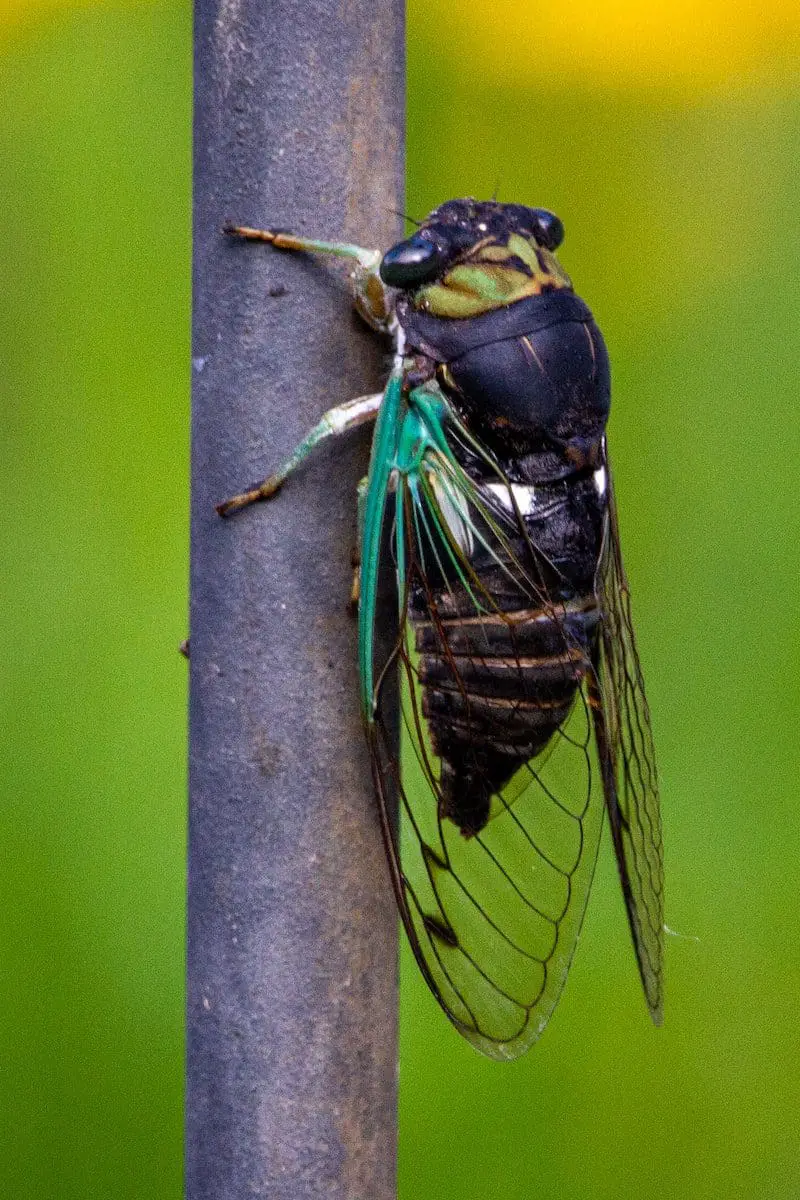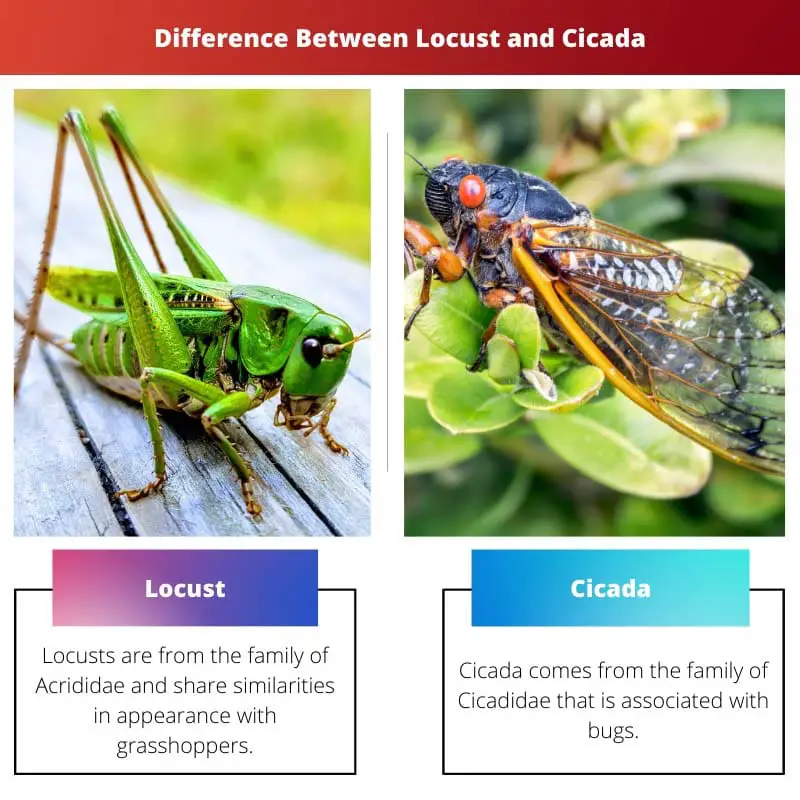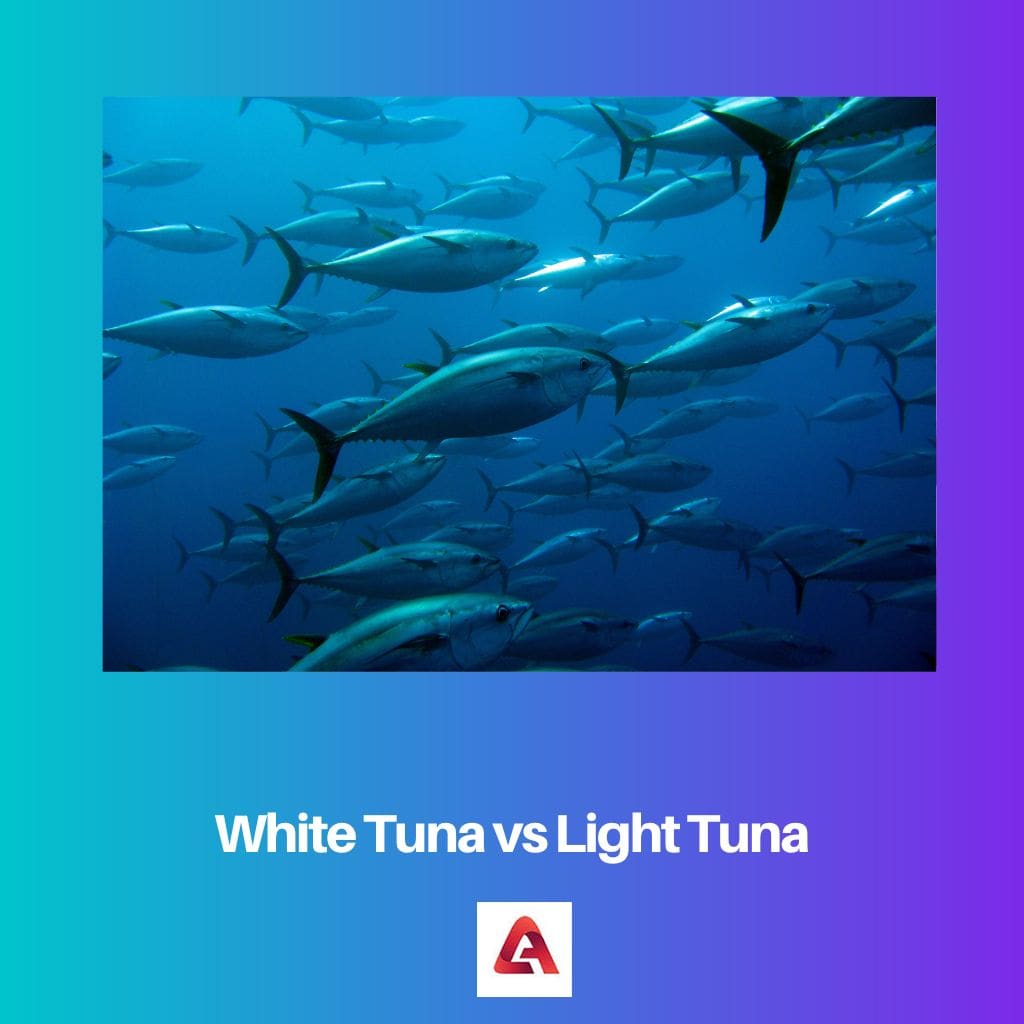Both these fascinating creatures are herbivorous insects with wings and the capacity to make noises. They both move in large groups.
Key Takeaways
- Locusts are a type of grasshopper that can swarm and cause significant agricultural damage, while cicadas are harmless insects known for their loud mating songs.
- Cicadas have a longer life cycle than locusts, with some species living up to 17 years.
- Locusts are herbivores and can strip vegetation, whereas cicadas feed on plant sap and do not cause extensive damage to plants.
Locust vs Cicada
Locusts are a type of grasshopper that can form swarms of millions of individuals and cause widespread damage to crops and vegetation. They are characterized by their large size, long hind legs, and distinctive sound. Cicadas are known for their loud, buzzing sound, which is produced by the males as a mating call. They have a broad, flat body, short legs, and prominent eyes.

Locusts resemble grasshoppers. They have wings and antennas. They are long with long back legs. They are noticed as the destroyer of crops and plants.
Cicada is similar to a bug. Cicada does not demolish crops while feeding themselves, but they tend to destroy the plants while laying eggs on them.
Comparison Table
| Parameters of Comparison | Locust | Cicada |
|---|---|---|
| Family | Locusts belong to the family of. Acrididae | Cicadas belong to the family of Cicadidae. |
| Type | This is a type of grasshopper. | This is a type of bug. |
| Size | Locusts can be up to four inches long. | Cicadas are two inches long. |
| Life span | Once the eggs of the locusts hatch, they only live for three to five months. | Once the eggs of the cicadas hatch, the cicadas become nymphs and go underground where they can live up to 17 years. |
| Food | Locusts feed themselves with the leaves and any other softer parts of plants. | Cicadas consume the liquid that is available inside the stems, roots, and branches of any plant. |
What is Locust?
Locusts are from the family of Acrididae and share similarities in appearance with grasshoppers. Locusts stay green before they reach their swarming stage.
Locusts are known for eating all kinds of leafy plants, soft parts of the plants and grasses. Sometimes they also consume dead insects as well in case of inadequacy of fresh leaves.
A solitary female locust is capable of laying about 95-158 eggs, and a gregarious female locust is competent to lay around 80 eggs.

What is Cicada?
Cicada comes from the family Cicadidae, which is associated with bugs. Cicada can be divided into two types, periodical and annual.
Usually, the cicadas are two inches long. They have big, yellowish-orange coloured transparent wings that protect the insects from water and as well as bacteria.
A Cicada lives a long life. They lay their eggs on plants, and while doing so, they damage the plants. After the eggs get hatched, they become nymphs and shift to underground burrows.

Main Differences Between Locust and Cicada
- Locusts swarm and destroy the path behind them, but cicadas do not swarm like locusts.
- After the laid eggs are hatched, the locusts do not live long. They live for 3 to 5 months after that and then die. But cicadas, on the contrary, lives up to 17 years underground.





